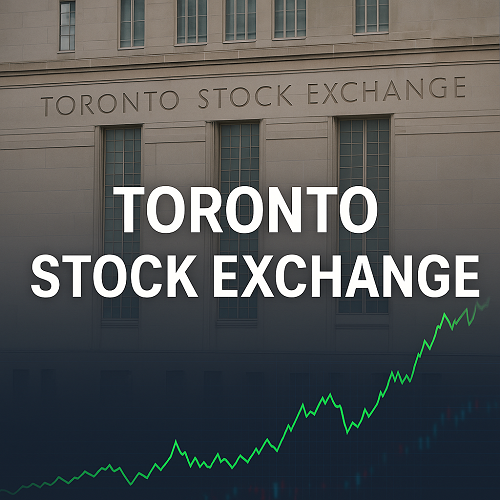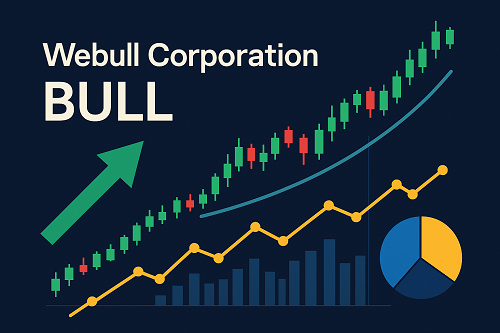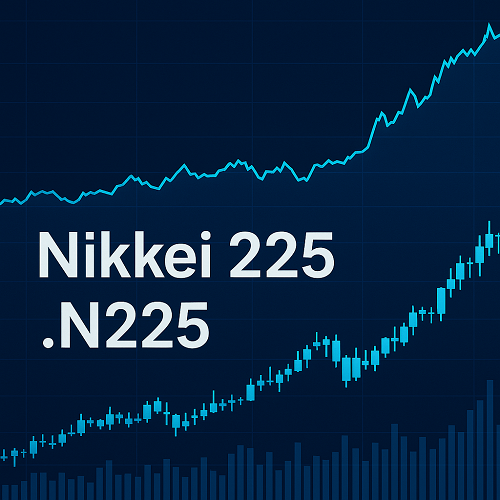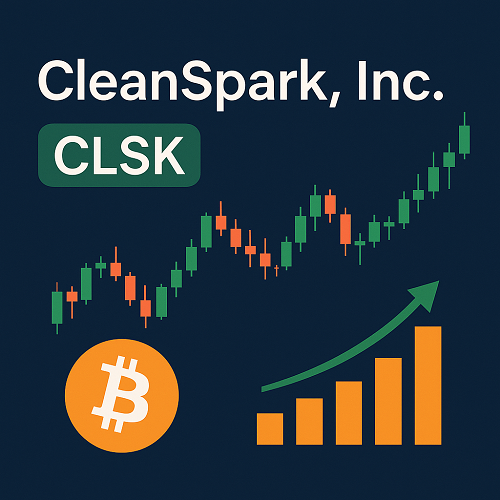The Toronto Stock Exchange (TSX) is Canada’s premier stock exchange, based in Toronto, Ontario. Founded in 1861, it serves as the principal venue for the trading of senior equities in Canada and is operated by the parent company TMX Group.
Located in the heart of Toronto’s financial district (EY Tower), the TSX lists thousands of companies and has market-capitalization measured in the trillions of Canadian dollars.
In short: it’s the backbone of Canadian public equity markets and plays a vital role in capital formation, liquidity provision and price discovery for Canadian- and many global-companies.
Why the TSX Matters (Globally & Locally)
- Global stature: The TSX is ranked among the top 10 largest stock exchanges in the world by market capitalization.
- North American relevance: It is one of the largest exchanges in North America (typically third after the NYSE and Nasdaq).
- Canadian economy focus: The TSX plays a critical role in Canada’s economy—as the venue where major banks, energy and mining companies are listed, raising capital, being traded by investors, and thus influencing investment flows, employment and the broader economic health.
- Sectoral leadership: Given Canada’s strong natural-resources, energy and financial-services sectors, the TSX offers access to those themes in a way many other exchanges do not.
- Gateway for international issuers: The TSX also serves as a listing destination for non-Canadian companies who value access to North American capital with Canadian regulatory and listing frameworks.
Because you are experienced in trading, both in equities and other asset classes, understanding the TSX comprehensively gives you an edge—especially if you trade Canadian-listed stocks, ETFs, or cross-listings.
Historical Evolution of the TSX
Origins & 19th Century
The TSX traces its roots to a brokers’ association formed in 1852; the exchange was formally founded on 25 October 1861, when 24 brokers gathered in Toronto to create it.
Between 1852 and 1870, Toronto saw other commodity-focused exchanges (e.g., the Toronto Stock & Mining Exchange in 1868) alongside the TSX’s emergence.
Initial listings were modest: by 1868 the exchange had grown to 18 listings (mostly banks and bonds).
20th Century Developments
In the early 1900s, the TSX grew steadily and moved locations (notably Bay Street in 1913) and by 1936 it had become third largest in North America.
Technological advancement: In 1977 the exchange introduced the TSE 300 index and launched CATS (Computer Assisted Trading System) to handle less-liquid equities.
In 1997 the traditional trading floor was closed; the TSX went to a fully electronic or floorless model.
Transition to Electronic Trading & Modern Era
In 2000 the TSX became a for-profit company; in 2002 it was rebranded from TSE to TSX.
In 2001 the TSX acquired the Canadian Venture Exchange (renamed TSX Venture in 2002).
A high-profile proposed merger with the London Stock Exchange in 2011 did not succeed.
Structure, Governance & Parent Company
The TSX is a wholly-owned subsidiary of the TMX Group, which itself owns and operates the TSX, TSX Venture, and other Canadian market infrastructure.
Key people: John McKenzie (CEO, TMX Group) and Loui Anastasopoulos (CEO, TSX & Global Head, Capital Formation) are current senior executives.
The TSX is regulated under Canadian securities legislation and must meet listing standards, disclosure rules and governance practices. Its corporate governance structure includes oversight of operations, risk management and compliance—important for institutional participants and public companies.
Electronic trading, clearing and settlement are managed via Canada’s market infrastructure, with the TMX group integrating multiple market segments (senior equities, venture equities, derivatives).
Market Operations: Hours, Instruments & Listings
Trading Hours
- Regular trading session: 09:30 a.m. to 4:00 p.m. ET (Eastern Time) on business days.
- Post-market session: Typically until 5:00 p.m. ET (4:15-5:00 p.m.).
Instruments & Listings
While the TSX is principally for senior equities (common shares of large companies, ETFs, structured products), it is supported by related exchanges (TSX Venture, TSX Alpha) that list newer, smaller growth companies.
As of January 2024, TSX listings numbered around 3,476 with total market capitalization about CAD $4.16 trillion (for TSX and TSX Venture combined).
Order execution & trading systems
Since the trading floor closure in 1997, TSX operates via an electronic order-book system, matching buy and sell orders, integrating algorithmic trading, market-maker participation, and high-speed connectivity. I
Listing as Capital Formation
For companies, listing on TSX offers access to the public markets for raising equity, providing liquidity, and establishing public valuations. TSX’s role in facilitating IPOs, secondary offerings and overall capital markets is central. The exchange publishes statistics on listings, financings, and trading activity via its “MiG Report”.
Sectoral Composition & Key Listings
Sectoral Strengths
- Financials: All of Canada’s “Big Five” banks (CIBC, BMO, Scotiabank, RBC, TD) are listed on the TSX, making it a major hub for financial-services exposure.
- Energy/Natural Resources: Given Canada’s natural-resource base, energy companies (Enbridge, Suncor, TC Energy, Canadian Natural Resources, Imperial Oil, Pembina, Cenovus) are prominent on the exchange.
- Mining: Historically, TSX has been a global leader in mining-sector listings (gold, base metals, exploration companies). This gives it a thematic exposure that many other exchanges do not emphasize.
- Technology, Healthcare, Real Estate & Others: While less dominant than resources/financials, TSX hosts many companies across sectors, and has increasing diversification.
Key Indexes
- S&P/TSX Composite: The benchmark index for TSX listed companies.
- S&P/TSX 60: A subset representing top-60 large-cap companies.
- S&P/TSX Completion: Covers companies outside the 60.
Global Cross-Listings
Many large TSX-listed companies also have secondary listings on U.S. exchanges (NYSE/Nasdaq). Often U.S. companies use TSX suffix “:CA” (e.g., AAPL:CA) for their TSX listing.
Listing Requirements & Corporate Capital-Formation Role
To list on TSX, companies must meet various criteria: minimum market capitalization, minimum public float, financial performance thresholds, corporate governance standards, and ongoing disclosure obligations. (See e.g. The Motley Fool’s explanation.)
TSX’s role in capital formation: By providing a regulated, liquid venue, it enables companies to raise public capital, supports secondary offerings, and facilitates investment by institutions and retail investors. The “MiG Report” tracks listing volumes, financing by sector and region.
For investors and corporations alike, the TSX is a platform bridging capital-demand (companies) and capital-supply (investors). Its standards and visibility make it a trusted venue.
Role in the Canadian Economy & Global Markets
Impact on Canadian economy:
- The TSX contributes to capital-allocation efficiency: directing savings into productive enterprises.
- It underpins the Canadian banking system, energy/commodity sectors, and thus indirectly jobs and growth.
- It offers a barometer of Canadian economic health: a rising TSX often reflects strong resource/financial-services performance; conversely, commodity downturns hit the TSX heavily.
Global linkages:
- As companies listed on TSX often trade globally (via cross-listings), the exchange is integrated with global markets.
- Movements in commodities (oil, gold, metals) heavily influence TSX performance (see academic regime-switching research on oil’s impact).
- Investors looking for resource-oriented exposure or Canadian-dollar denominated equities often use TSX instruments.
Strategic importance: Given Canada’s position in key global supply-chains (minerals, energy, base metals, critical-minerals), the TSX is a strategic hub for public-markets financing of those sectors.
Key Indexes and Market Metrics
Major Indexes
- S&P/TSX Composite: the broad-market benchmark for senior equities on TSX.
- S&P/TSX 60: top large-cap stocks.
- S&P/TSX Completion: smaller or mid-cap TSX companies.
Market Capitalization
As of January 2024, TSX & TSX Venture combined listed issuers with market cap CAD $4.23 trillion.
Statistics & Trading Activity
TSX publishes the MiG (Market Intelligence Group) Report tracking listings, financings, trading volumes by sector/region.
Investor Use
For traders and investors, TSX index levels (e.g., S&P/TSX Composite) can signal economic shifts in Canada, especially commodity and financial-sector trends.
Challenges, Trends & Future Outlook
Challenges
- Sector concentration risk: TSX is heavy in resources and financials; so a downturn in commodities or financial crisis can hit harder than more diversified exchanges.
- Global competition for listings: Non-Canadian companies may opt for U.S. or other exchanges for liquidity, making TSX compete globally.
- Technology disruption & listings alternative: SPACs, direct listings, startup funding rounds may reduce appeal of traditional IPOs.
- Regulatory, geopolitical & commodity risk: Because many TSX listed companies are resource-linked, commodity price swings, regulation, environmental shifts add volatility.
Emerging Trends
- Increasing listings of international mining/resource companies, e.g., Australian firms looking to TSX.
- Growing emphasis on ESG (environmental, social, governance) metrics and sustainable-finance listings within TSX domain.
- Further digitalisation of trading infrastructure, enhanced data-services and globalised order-flow.
- Potential consolidation or strategic partnerships in the global exchange landscape (though a planned merger with London in 2011 fell through).
Outlook
For investors/traders: The TSX remains a robust exchange with strong infrastructure, deep-listing base, and relevance to several secular themes (commodities, energy transition, financial services). The key will be navigating sectoral shifts and understanding how Canadian-market dynamics differ from U.S. peers.
Practical Implications for Traders, Investors & Analysts
Given your background in trading (stocks, forex, crypto) and ad-ops, here are some specific actionable points relating to TSX:
Cross-market correlation
- Because many TSX firms are commodity- or energy-linked, TSX movements can correlate strongly with commodity prices (oil, metals).
- For forex/traders: Movements in the Canadian dollar (CAD) frequently reflect strength/weakness in the TSX and vice versa.
Sector-specific angle
- If doing equities/trading exposure in Canada: consider how TSX’s resource/extraction-heavy composition impacts risk and return (higher beta).
- For portfolio diversification: TSX may offer different risk-profile relative to U.S. large-cap indexes (e.g., more resource-exposed, less tech-heavy).
Market timing & macro overlay
- When global risk appetite is strong and commodity demand rises, TSX may outperform; conversely in global slowdowns TSX may lag due to exposure to resources/financials.
- For programmatic/quant strategies: TSX index levels and sector breakdowns could serve as input variables (e.g., resources-exposure as a signal).
Listing-related insights
- For companies considering listing or raising capital: TSX remains a credible venue—but listing standards, regulatory regime, investor base and Canadian dollar currency risk must be weighed.
- For analysts tracking Canadian markets: TSX’s MiG reports and disclosure provide data on issuance, sector activity and trading volumes that may act as lead-indicators for Canadian economy.
Regulatory/currency risk
- Because the TSX operates in CAD, international investors/traders need to account for FX risk when holding Canadian-listed securities.
- Regulation: Canada’s securities regime, listing requirements and disclosure obligations differ from U.S., so analysis must factor in governance and regulatory context.
Conclusion
The Toronto Stock Exchange is a cornerstone of the Canadian financial-markets ecosystem and a significant player globally. It serves as a vital platform for capital formation, trading, liquidity and investment. For traders, analysts and investors—with your background in media, digital platforms and diversified business interests—understanding its structure, sectoral composition and macro-economic interplay can offer distinct advantages.
Whether you’re evaluating Canadian equity exposure, aligning cross-border strategies, or simply seeking to broaden your market-knowledge, the TSX deserves a prominent place in your toolkit. With its long history (over 160 years), deep listing base, and evolving role in a rapidly changing global environment, the TSX offers both opportunity and risk—knowledge is the key.





 XAUT-USD
XAUT-USD  AMD
AMD  MARA
MARA  SHOP
SHOP  BULL
BULL  CL=F
CL=F